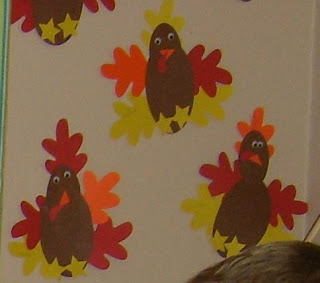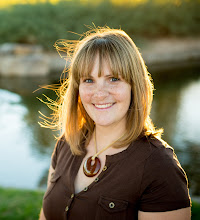. . .Quadrilaterals
For math time we looked at our pattern blocks. We looked at each shape and counted how many sides it had. We sorted the blocks into blocks with 4 sides and other blocks.
After we sorted the blocks, we used our pattern blocks to make pictures on printable templates. (they came from www.kellyskindergarten.com)
 . . . Quilts
. . . Quilts
We talked about what a quilt is . . . a big blanket made up of shapes that fit together. We looked at a couple of different quilts and discussed what shapes made up that quilt. We also talked about how people make friendship quilts. They make them and give them to their friends to remind them that they love them. We made our own friendship quilt.
We traced and colored our hands on our quilt block. Then we sewed our quilt blocks individually. I punched the holes for the sewing part and we used yarn with tape at the end. I taught the kids that when we sew, we go up and down and we talked about going around the edge without skipping holes.
I was very impressed that most of them got it after 1 or two tries and we didn't have to resew very many times.


For math time we looked at our pattern blocks. We looked at each shape and counted how many sides it had. We sorted the blocks into blocks with 4 sides and other blocks.
After we sorted the blocks, we used our pattern blocks to make pictures on printable templates. (they came from www.kellyskindergarten.com)
We talked about what a quilt is . . . a big blanket made up of shapes that fit together. We looked at a couple of different quilts and discussed what shapes made up that quilt. We also talked about how people make friendship quilts. They make them and give them to their friends to remind them that they love them. We made our own friendship quilt.
We traced and colored our hands on our quilt block. Then we sewed our quilt blocks individually. I punched the holes for the sewing part and we used yarn with tape at the end. I taught the kids that when we sew, we go up and down and we talked about going around the edge without skipping holes.
I was very impressed that most of them got it after 1 or two tries and we didn't have to resew very many times.





